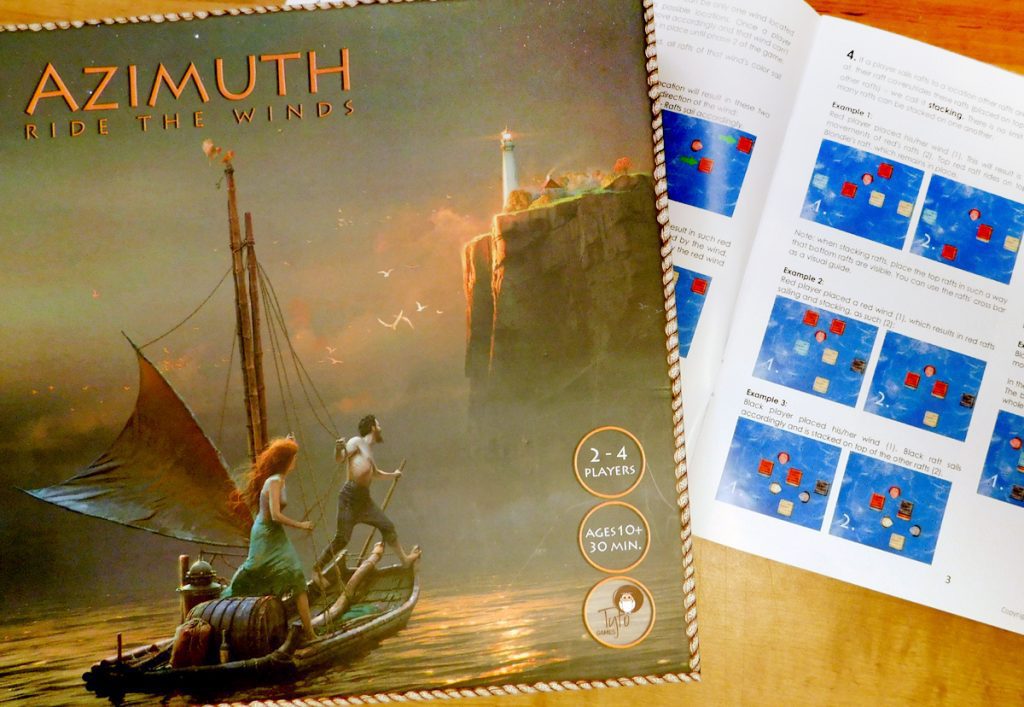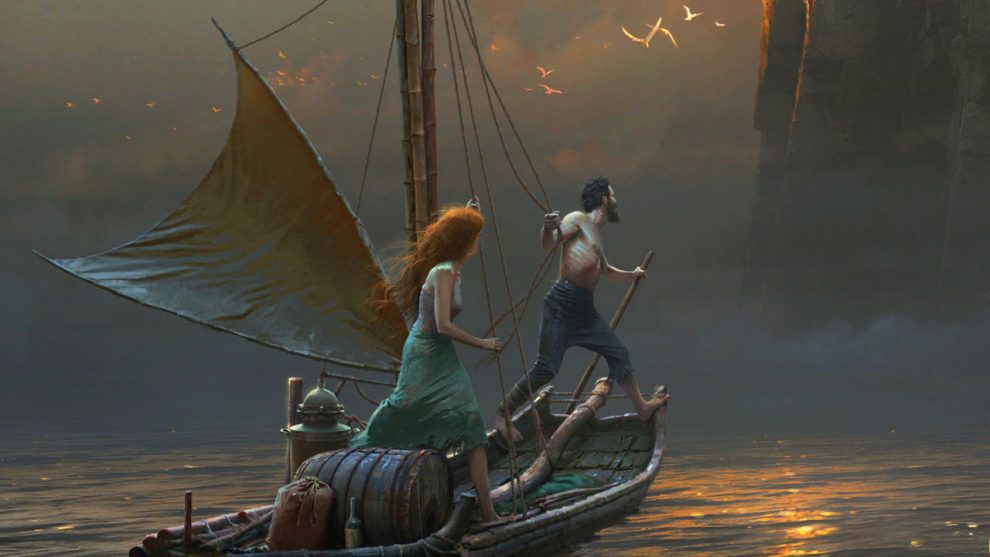A common talking point among gamers today when it comes to new releases is “theme.” Does the game have enough of it? If not, is it an abstract game? Is a good story integral to the gaming experience? Apart from a definite difficulty in defining terms like “abstract,” most people seem to fall into one of two camps. Either they demand a deep, thematic experience that gives them a setting they can visualize and a character to identify with (Gloomhaven, Unbroken) or, on the other hand, they can’t be bothered with such trifles, preferring instead to focus on games that offer deep mechanics and gameplay and nuanced strategy (Dominion is a classic example). Every new release is scrutinized, analyzed, and ultimately deemed to be thematic or abstract.
Azimuth: Ride the Winds is a new semi-abstract (at least, that’s what I’ll call it) game from publisher Tyto and designers Sharon Katz and Lior Keinan. Also, Azimuth is a game that might, just maybe, let you have your cake and eat it too. It nimbly straddles the divide between abstract and thematic. In gameplay, it feels something like the classic Tsuro only infinitely more evocative, placing you in the shoes of a stranded seaman struggling to find his way home across the ocean.

From the cover of the box to the stunning lighthouse game pieces, Azimuth places you squarely on the raft alongside your woebegone castaway–you can practically smell the seawater as you set up the game board. The castaways start on a small desert island and a collection of rafts randomly populate the ocean (each raft will be the color of one of the players/castaways). The lighthouses are placed across the waves on islands of their own, casting beacons out across the waters to help guide the wayward souls home. Lastly, each player takes a collection of wind tokens into their hand (mostly of your own color but, depending on the player count, possibly one of the other player’s as well).

The goal of the game is simple: the first player to guide their castaway safely to their lighthouse is the winner. To do so, players will have to skillfully manipulate the mercurial ocean winds to propel the raft containing your castaway towards home, all while doing their best to send their opponents farther out to sea. At the start of the game, players can either place a wind token on their turn–propelling all adjacent rafts of the matching color in the direction the token points–or have their castaway swim from the raft they’re on to an orthogonally adjacent raft of their own color. Once players have played all their wind tokens they can start moving their own winds to empty, adjacent spots–which triggers the same effect as placing that token would–as well as manipulating other players’ winds by rotating them 90 degrees. This,again, re-triggers that wind’s effect on the surrounding rafts.

In broad terms, that’s all you need to know about how Azimuth is played. Simple mechanics belie strategy as deep as the ocean that makes up the board. Because of the way winds can only rotate by 90 degrees, no action is easily undone, and you’ll find your rafts swirling to and fro as you struggle to propel them home. Just when you think you’ve backed your opponent into a corner, they spot a move you completely missed that sends your castaway careening in the wrong direction. This may sound tedious, but it isn’t. Because the game is always progressing forwards (even if that sometimes means backwards), you never feel like you’re in a tug-of-war with the other players, and the the written playtime of 30 minutes is fairly accurate.
Azimuth is a game of precision and elegance. It’s also surprisingly fiddly at first, with a rulebook that spends 80% of it’s proportionately-lengthy 12-page manual explaining the “If-thens” of the game. Like “If wind propels one raft into another then the moving raft stacks on top of the static raft” or “If wind would effect a stack of rafts then it moves the highest raft of matching color along with any rafts on top of that one.” And there are a lot of “If-thens” in Azimuth for a game with a very simple set of core rules.

Now, that isn’t a bad thing. The more you play Azimuth the more you appreciate just how many nuances and subtleties it has for a game that, at first glance, looks like a nautical version of the abstract classic Quoridor. Situations arise that make you scratch your head and reach for the manual for help. And the manual does a very thorough job of addressing all the possibilities. As a result, the game will seem more complicated as you read the rules than it does when you play it. After a few rounds you will be able to comfortably lay the manual aside and focus on, quite literally, blowing your opponents away.
There are other bits and pieces to the game that you will discover as you go, like the coconut tokens that are used in 3-4 player games to limit the number of times you can adjust other players’ winds. It’s also worth noting that I played a prototype copy of the game with neither the rules nor the components set in stone. But even if they didn’t change a single thing, the game already offers everything you could ask for: theme, elegance, narrative, and strategy. So whether you veer towards abstract mechanics or immersive themes, Azimuth has something to offer you.
It’s currently on Kickstarter and you can check it out here.












Add Comment